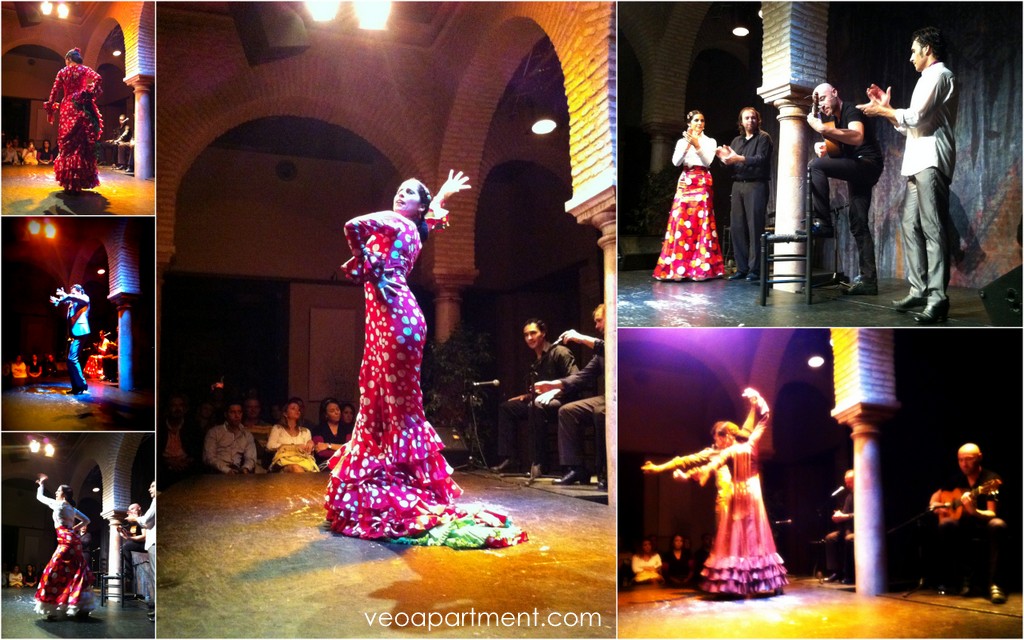Among the many attractions that bring visitors to the south of Spain, one of the most popular (after the sun, food, and spectacular monuments) is Flamenco. We probably all carry a picture of foot-stamping dancers, the men in smart waistcoats and tight trousers, the women in flouncy polka-dot dresses, a Spanish guitarist, and a ring of hand-clapping spectators in the shadows around the edge of the firelight, and a sneaking suspicion that the real thing is not quite like that. So what is flamenco?
For a start you can forget the firelight – these days performances are indoors – and while you may see polka-dot dresses, they are usually a feature of Sevillanas, which is a flamenco-influenced folk dance that is popular at fairs and festivals. Both classical and popular, and declared an Intangible World Heritage Treasure by UNESCO in 2010, Flamenco is a performance art form combining both music and dance. The name is thought to derive from the Arabic Fela Mengu, or travelling peasant, referring to the Gypsies and other “rootless” people, who began to bring together many of the elements that make up modern Flamenco, which was born in Andalusia about three hundred years ago. Its roots, however, are much older, and we can illustrate this with some examples.
Castanets developed from the crotalos, a hand percussion instrument from the island of Crete, brought to Spain by the Phoenicians more than 2500 years ago.
The distinctive sinuous hand movements originated in Punjabi dance on the Indian sub-continent, and came to Spain with the Gitanos, or Gypsies, arriving around the 16th century.
“Spanish” guitar originated in North Africa, developing in the Moorish kingdoms there and in southern Spain.
The Ida y Vuelta (going and coming back) varieties of Flamenco refer to the music that Spanish explorers took to the New World, and brought back incorporating the rhythms of the indigenous people.
Flamenco dance has a fixed structure, but within that structure the dancer is free to improvise. The musicians follow the dancer (in a Flamenco performance you may notice that the guitarist watches the dancer closely), but the palmas (hand-clapping) are a “human metronome” that keeps the dancer’s rhythm within the structure.
There are about 50-60 palos or styles of Flamenco, depending on how they are categorised, each with its own rhythm and tempo that express the full range of human emotion. Unlike most other traditional music and dance forms, Flamenco is still evolving, giving rise to new styles like flamenco fusion and jazz, and flamenco fashion.
Where to See Flamenco
For more information, visit our pages Flamenco in Seville and Flamenco in Granada
